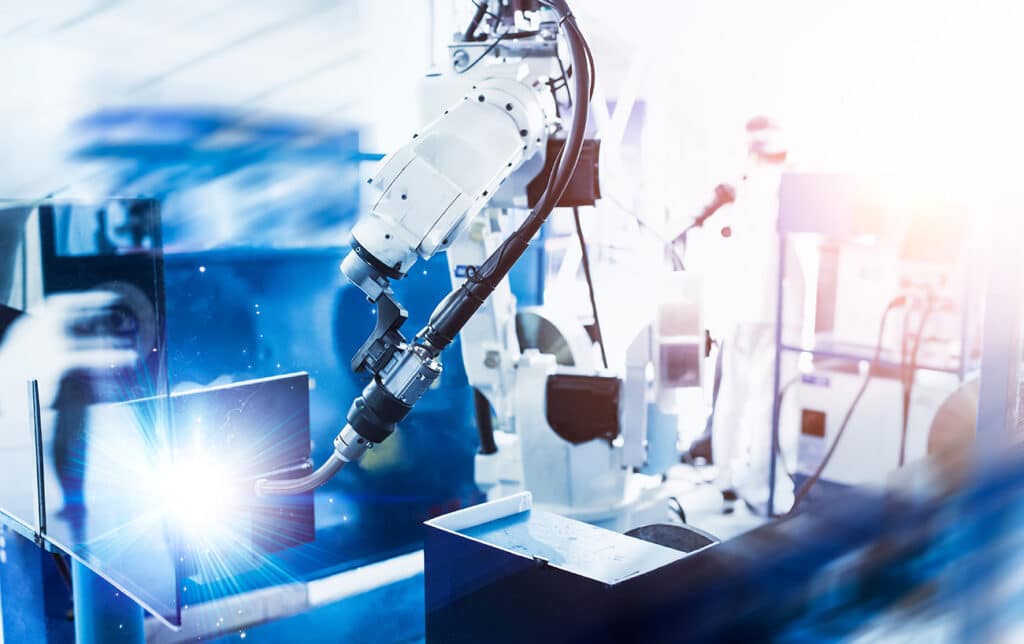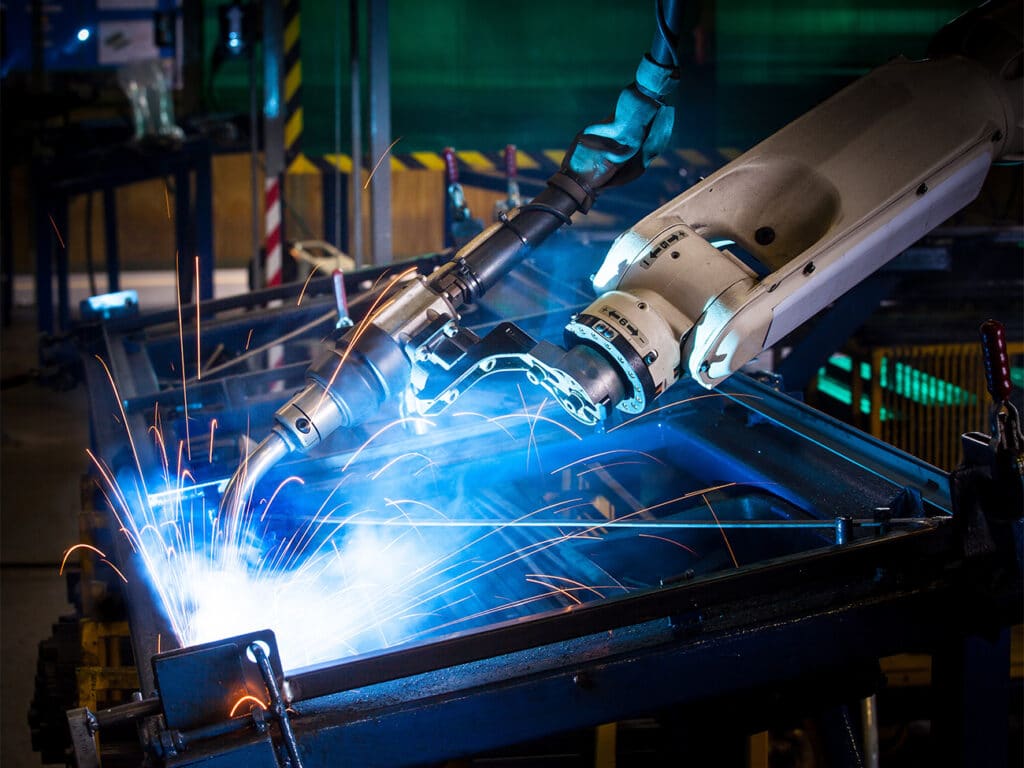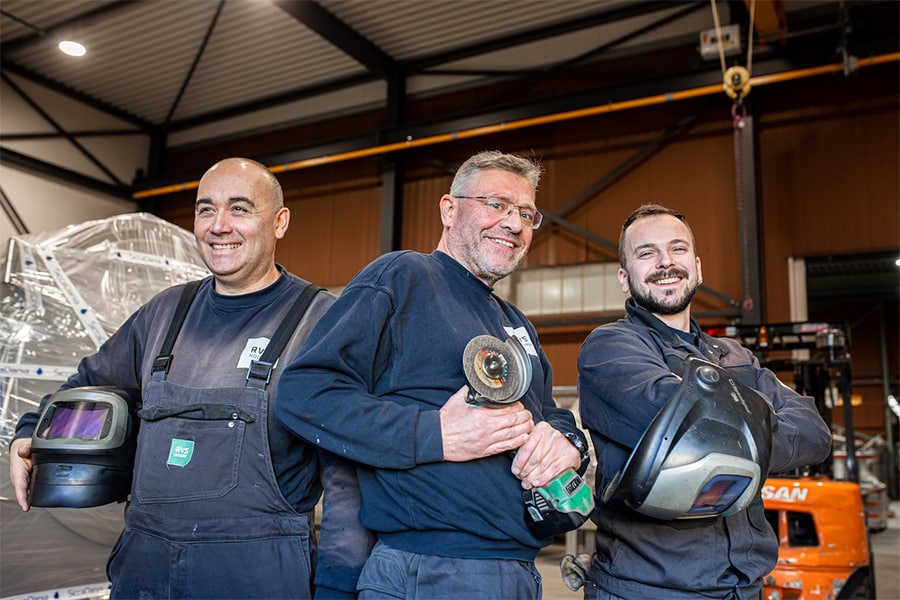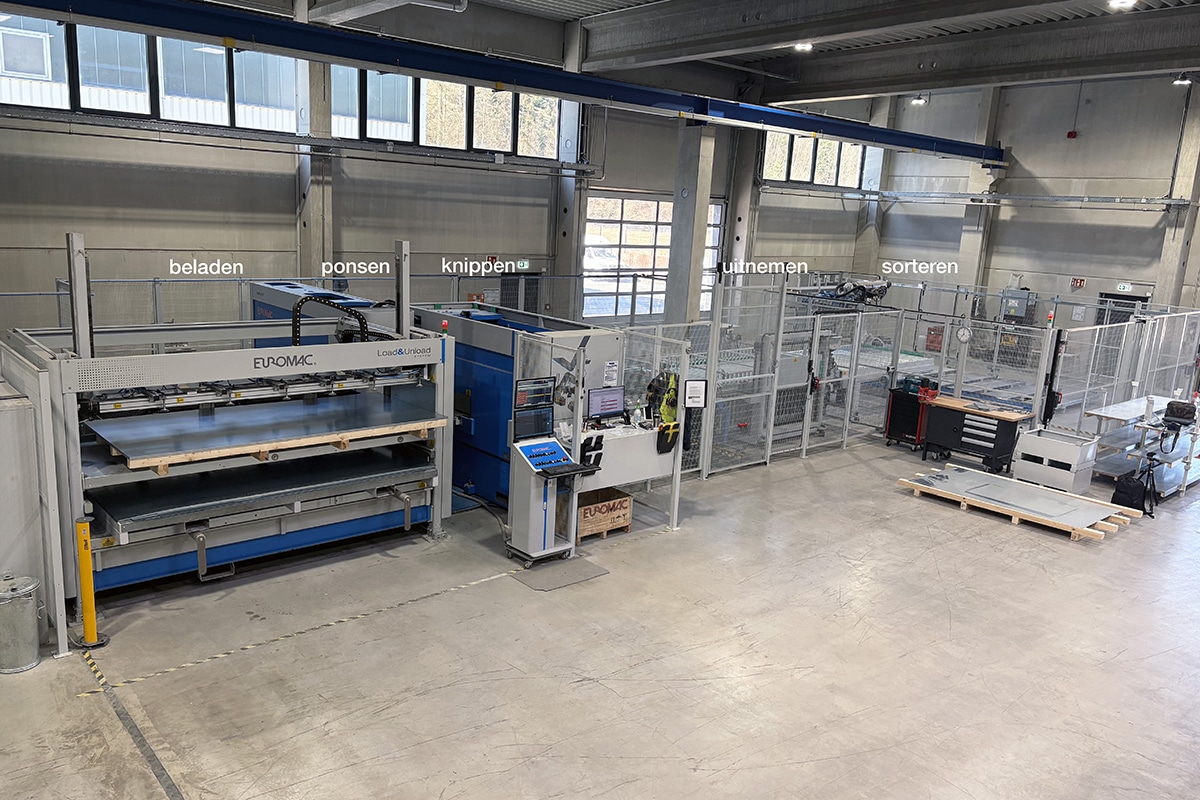
How do you avoid stalling your welding robot?
Are you getting high volumes of welding work to process under pressure of time and prices? Then a welding robot is often the answer. After all, they deliver tremendously consistent quality in no time. But to know exactly how productive such a welding robot is, we need to look at how long and how often it is idle. Every second of downtime will count, both for companies with long automated welding lines and for an SME. Reducing downtime in welding robots starts with choosing the right welding torch.
Why are welding robots at a standstill? There can be many reasons, as the situation varies from company to company. Each welding robot cell within industrial production constitutes an independent system where errors can occur anywhere. Three golden rules can have a positive impact on the productivity of your welding robot.
Select the right equipment for your welding robot (welding torch, wear parts such as nozzles and contact tip, cable guide...). We will go into more detail on choosing a welding torch later. Second, make sure the robot is properly programmed. The better the robot is programmed, the longer the wear parts will also last and the less chance of severe damage from a collision. The robot program is like the heartbeat of your welding process; it ensures that everything runs smoothly and accurately. Third, provide for preventive maintenance so that all components also remain in perfect condition.
Welding torch air-cooled or water-cooled?
Welding robots are expected to deliver high consistency in quality. Yet they must get the job done under harsh conditions. A welding torch of a welding robot has to endure a lot during its daily routine: high current, enormous heat generation, welding spatter and even the risk of an occasional crash. Therefore, the welding torch must be able to take a beating, but there are particularly many differences between welding torches in the metal market.
A first important parameter to consider when selecting is the power of the welding source. If it is below 300 A, then an air-cooled welding torch will suffice, above 300 A it is better to opt for water cooling. When a lot of heat is released from the process and there are long production cycles, then a welding torch on a welding robot must be actively cooled to ensure durable operation of the wearing parts. The less quickly they wear out, the less likely they will need to be replaced and thus the less often the robot will be idle.

No straight welding torch
In turn, the geometry of the welding torch must be matched to the welding task. Standard welding torches have bending angles of 22°, 33° or 45°. Straight welding torches are not suitable. A welding wire has a natural flow when passed through the welding torch. This is because they usually come on spools. A phenomenon called pre-dressage. The greater the pre-dressage, the more directed the wire is fed into the contact tip and the smaller the number of wire contact points in the contact tip. That means a higher current density per tip and thus a stronger heating. Straight welding torches make it more difficult to weld with a large pre-dressage. We are talking about diameters of 900 to 1,200 mm. However, this can be solved with so-called rotary torches, a longer contact tip or narrower bores in the contact tip.
Special geometry
Certain applications require a specific geometry of the welding torch. It must ensure good accessibility to the workpiece. If the welding robot has to be positioned unfavorably to reach the product to be welded, the cables can become twisted or blocked. And that, of course, has its impact on the service life.
Interchangeable torch handles
An interchangeable welding torch neck can be a good solution for a welding robot. In case of maintenance or malfunctions, they can be easily and quickly replaced. Maintenance can then be done outside the welding robot cell so that it can continue welding. Using an adjustment gauge, the TCP must then be checked and corrected if necessary so that it is ready for the next replacement. This can be done manually by the system operator, or automatically using torch change systems.
Some tips & tricks
- Choose quality when selecting welding torch
- With straight welding torches, pay more attention to the contact points in the contact tip
- Make sure the welding torch on the welding robot can easily reach the workpiece
- Avoid getting the cables twisted
- Interchangeable welding torch necks can help reduce welding robot downtime



